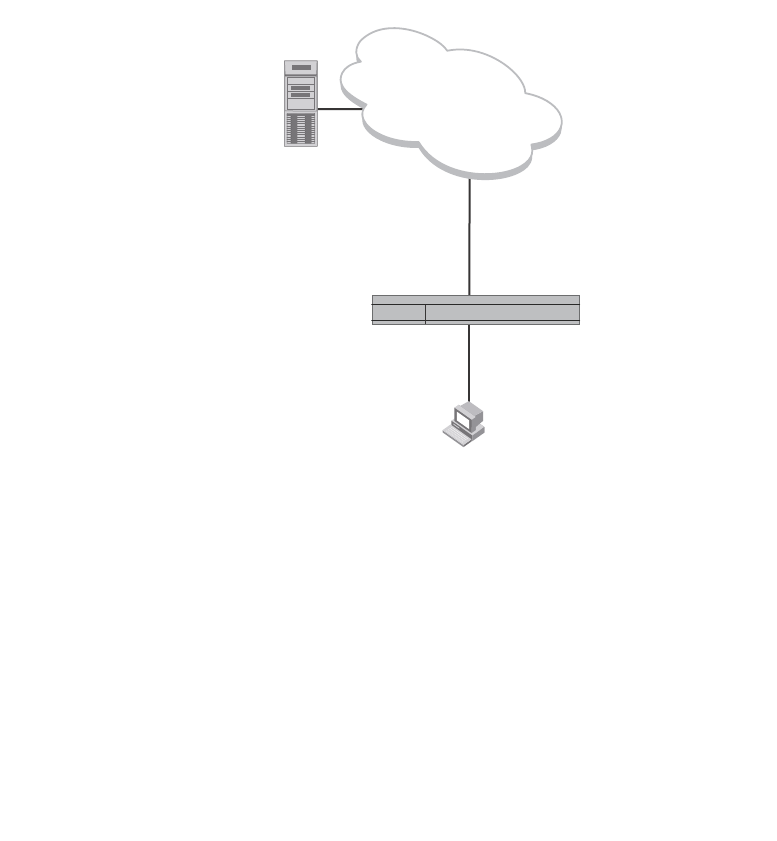Home Theater Server User Manual
Table Of Contents
- Contents
- About This Document
- Network Security
- TCP SYN attacks
- IP TCP syn-proxy
- Granular application of syn-proxy feature
- Syn-def
- No response to non-SYN first packet of a TCP flow
- Prioritizing management traffic
- Peak BP utilization with TRAP
- Transaction Rate Limit (TRL)
- Understanding transaction rate limit
- Configuring transaction rate limit
- Configuring the maximum number of rules
- Saving a TRL configuration
- Transaction rate limit command reference
- Global TRL
- TRL plus security ACL-ID
- security acl-id
- Transaction rate limit hold-down value
- Displaying TRL rules statistics
- Displaying TRL rules in a policy
- Displaying IP address with held down traffic
- Refusing new connections from a specified IP address
- HTTP TRL
- Overview of HTTP TRL
- Configuring HTTP TRL
- Displaying HTTP TRL
- Display all HTTP TRL policies
- Display HTTP TRL policy from index
- Display HTTP TRL policy client
- Display HTTP TRL policy starting from index
- Display HTTP TRL policy matching a regular expression
- Display HTTP TRL policy client index (MP)
- Display HTTP TRL policy client index (BP)
- Display HTTP TRL policy for all client entries (BP)
- Downloading an HTTP TRL policy through TFTP
- HTTP TRL policy commands
- Logging for DoS Attacks
- Maximum connections
- clear statistics dos-attack
- Maximum concurrent connection limit per client
- Firewall load balancing enhancements
- Syn-cookie threshhold trap
- Service port attack protection in hardware
- Traffic segmentation
- DNS attack protection
- Access Control List
- How ServerIron processes ACLs
- Default ACL action
- Types of IP ACLs
- ACL IDs and entries
- ACL entries and the Layer 4 CAM
- Configuring numbered and named ACLs
- Modifying ACLs
- Displaying a list of ACL entries
- Applying an ACLs to interfaces
- ACL logging
- Dropping all fragments that exactly match a flow-based ACL
- Enabling ACL filtering of fragmented packets
- Enabling hardware filtering for packets denied by flow-based ACLs
- Enabling strict TCP or UDP mode for flow-based ACLs
- ACLs and ICMP
- Using ACLs and NAT on the same interface (flow-based ACLs)
- Displaying ACL bindings
- Troubleshooting rule-based ACLs
- IPv6 Access Control Lists
- Network Address Translation
- Syn-Proxy and DoS Protection
- Understanding Syn-Proxy
- Configuring Syn-Proxy
- DDoS protection
- Configuring a security filter
- Configuring a Generic Rule
- Configuring a rule for common attack types
- Configuring a rule for ip-option attack types
- Configuring a rule for icmp-type options
- Configuring a rule for IPv6 ICMP types
- Configuring a rule for IPv6 ext header types
- Binding the filter to an interface
- Clearing DOS attack statistics
- Clearing all DDOS Filter & Attack Counters
- Logging for DoS attacks
- Displaying security filter statistics
- Address-sweep and port-scan logging
- Secure Socket Layer (SSL) Acceleration
- SSL overview
- SSL acceleration on the ServerIron ADX
- Configuring SSL on a ServerIron ADX
- Basic SSL profile configuration
- Advanced SSL profile configuration
- Configuring Real and Virtual Servers for SSL Termination and Proxy Mode
- Configuration Examples for SSL Termination and Proxy Modes
- SSL debug and troubleshooting commands
- Displaying socket information

102 ServerIron ADX Security Guide
53-1002440-03
Configuring NAT
4
ServerIronADX(config)# interface ethernet 1/1
ServerIronADX(config-if-e1000-1/5) ip address 30.30.0.1 255.255.0.0
ServerIronADX(config-if-e1000-1/5) ip nat outside
The following command creates a pool of IP NAT addresses from 15.15.15.15 to 15.15.15.25
named p1.
ServerIronADX(config)# ip nat pool p1 15.15.15.15 15.15.15.25 prefix-len 24
An ACL is created to permit traffic from inside hosts in the 20.20.0.0 network as shown.
ServerIronADX(config)# access-list 1 permit 20.20.0.0 0.0.255.255
The following command ties the inside source list defined in ACL “1” to the pool named “p1” and
enables PAT to send traffic out the interface defined as “outside”.
ServerIronADX(config)# ip nat inside source list 1 pool p1
Static NAT configuration example
The following examples describe how to configure a Static NAT configuration for Inside to Outside
and Outside to Inside translation for the example shown in Figure 8.
FIGURE 8 Example of a static NAT configuration using router code
Configured for inside to outside translation
In the following example, the ServerIron ADX is configured to translate the local host IP address
20.20.5.6 to the unique global address 15.15.15.15.
This example requires that Interfaces 1/5 and 1/1 be configured as Inside and Outside interfaces
respectively as shown.
ServerIronADX(config)# interface ethernet 1/5
ServerIronADX(config-if-e1000-1/5) ip address 20.20.50.1 255.255.0.0
ServerIronADX(config-if-e1000-1/5) ip nat inside
Remote Server
Internet
Inside Interface
Outside Interface
1/1
1/5
Global IP address: 15.15.15.15
Local IP address: 20.20.5.6
SI










